Why you can trust Tom's Hardware
AMD Radeon RX 7600 Reference Design
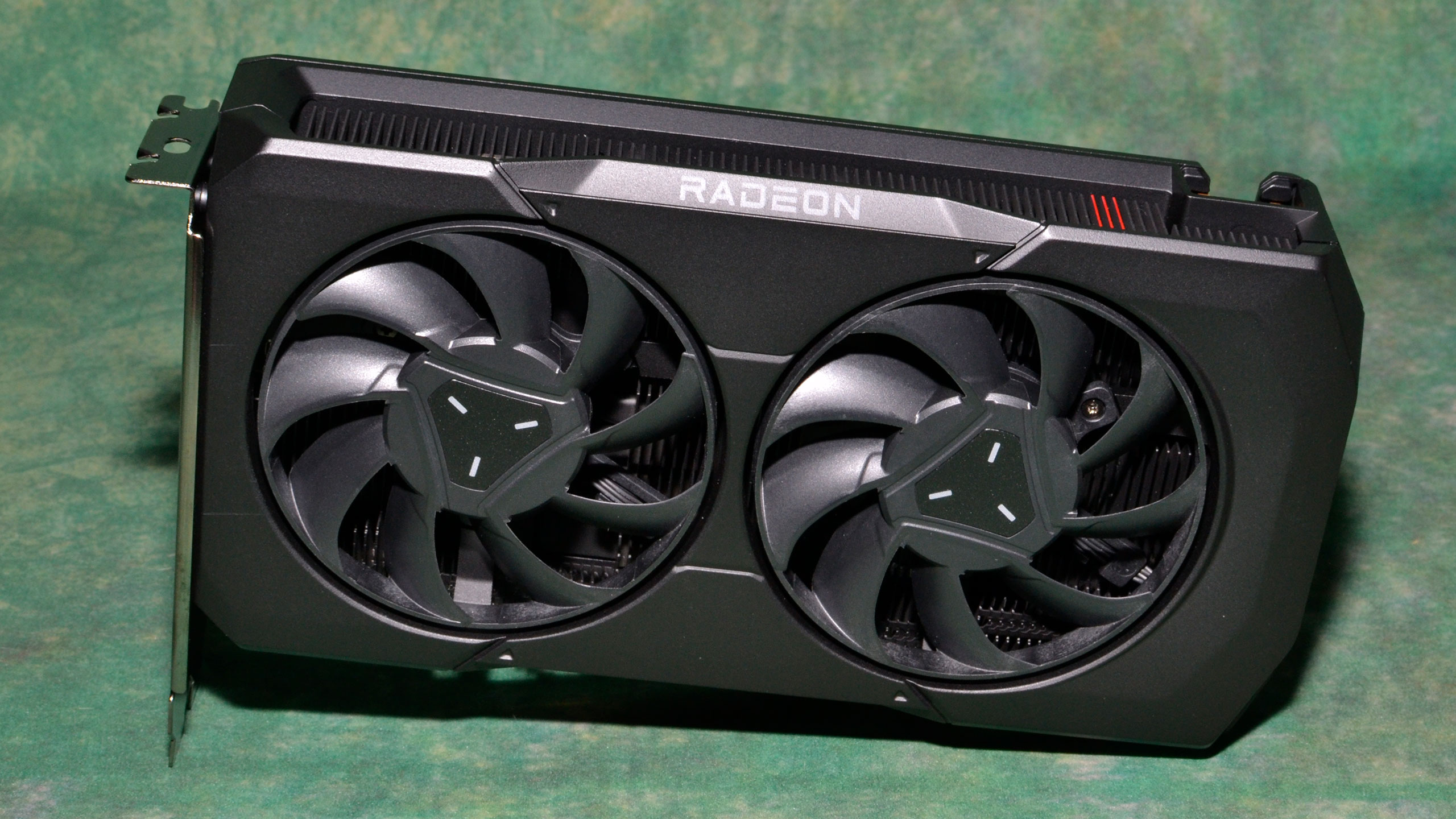
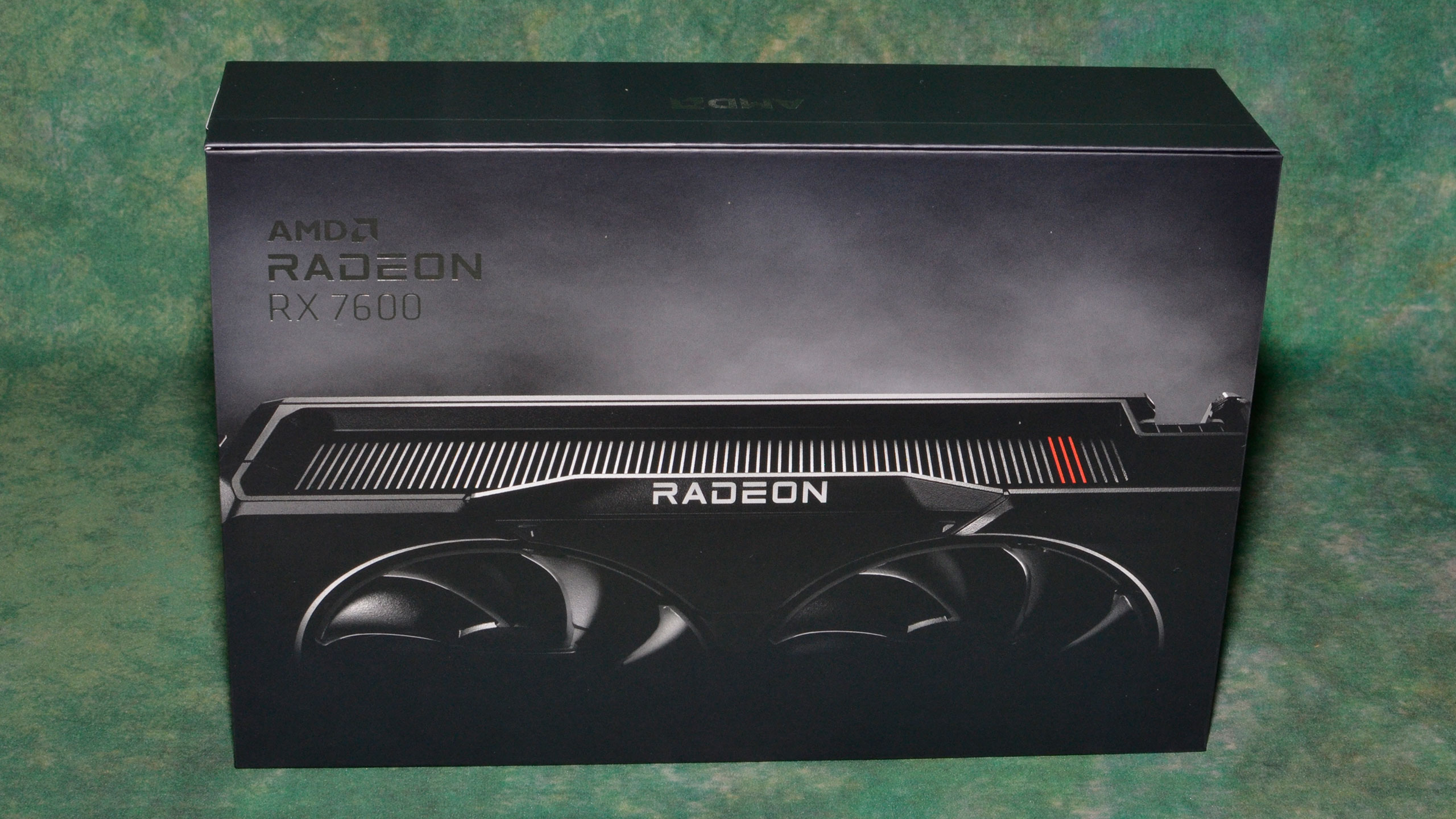
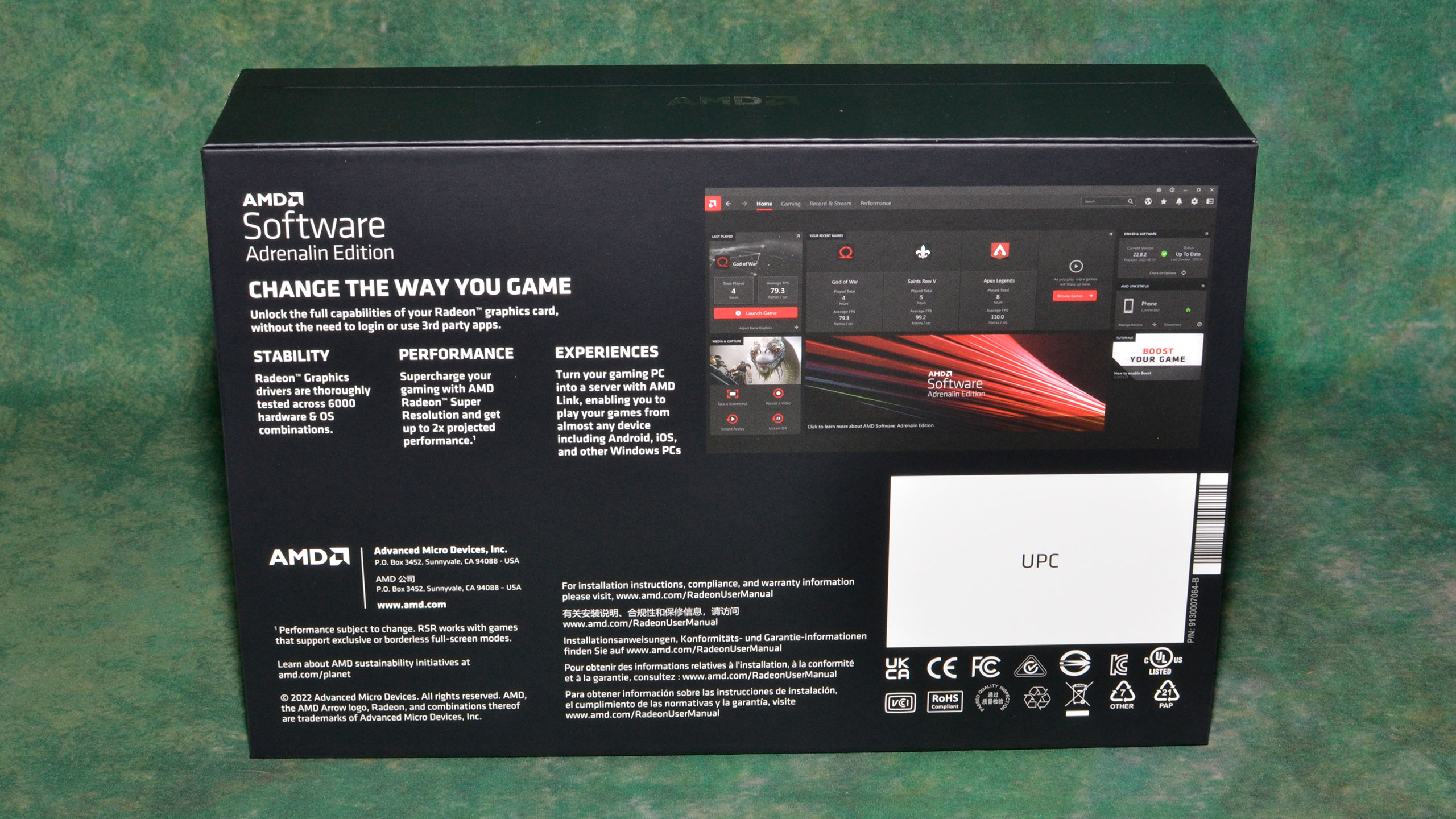
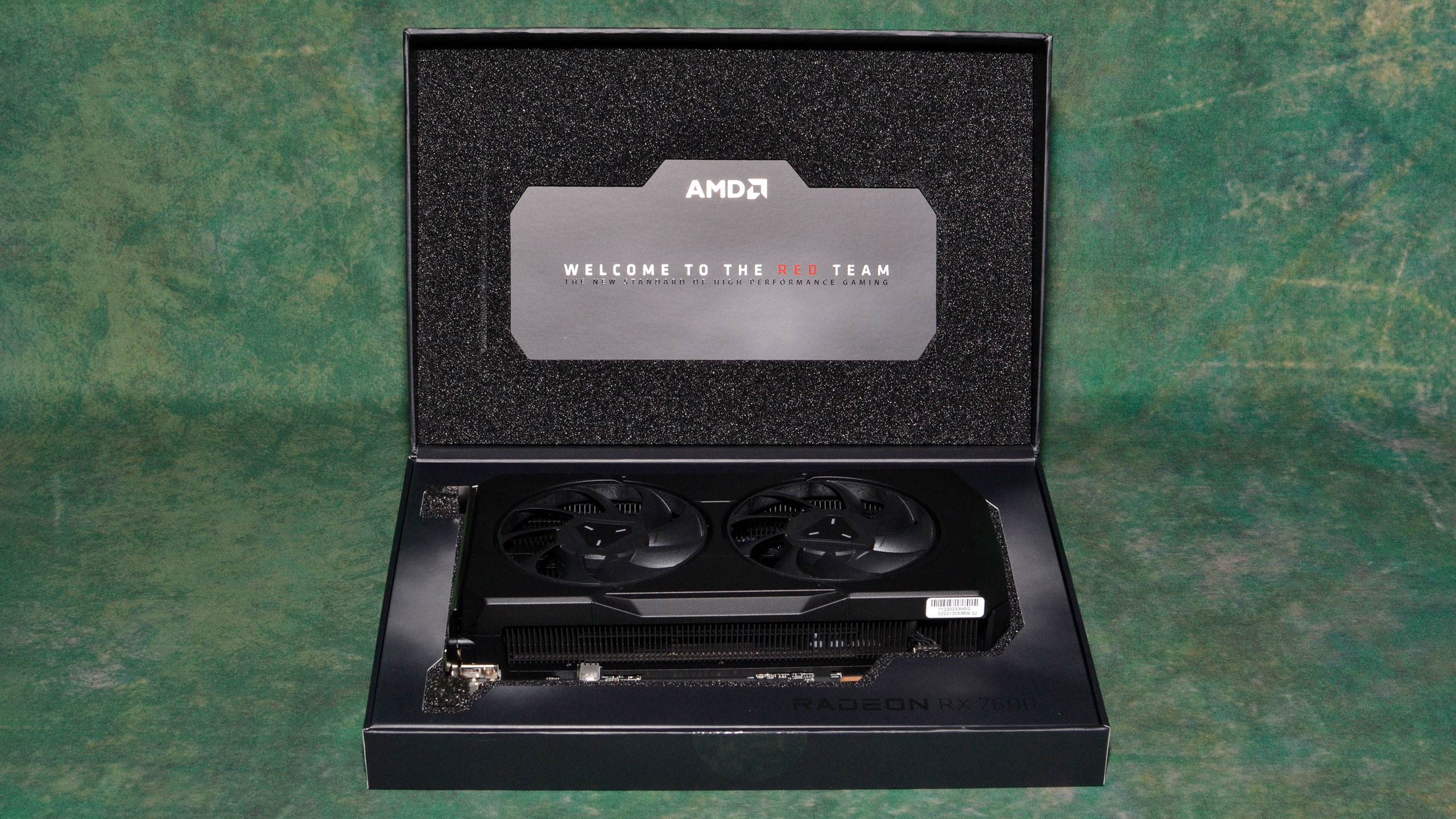
In a nice change of pace, AMD has decided to create its own reference design for the RX 7600. We don't know how widely available it will be, but it follows the same aesthetic and design language as the RX 7900 XTX / XT. But, of course, this is more of a budget offering, or at least a mainstream GPU, so there's no RGB lighting or other frills.
That's not necessarily a bad thing, though! We're well past the saturation point for RGB effects, and sometimes you just want a card that does what it's supposed to do without screaming, "Look at me!" If you're building a compact mini-ITX or micro-ATX PC to go in a bedroom, for example, having zero lights would be a good thing.
AMD's MBA ("Made By AMD") design is black with red highlights, basically like a miniature take on the RX 7900 XT MBA design. There are two fans with integrated rims, the same 78mm diameter as the 7900 XT fans. (The 7900 XTX has larger 84mm fans, if you're wondering.)
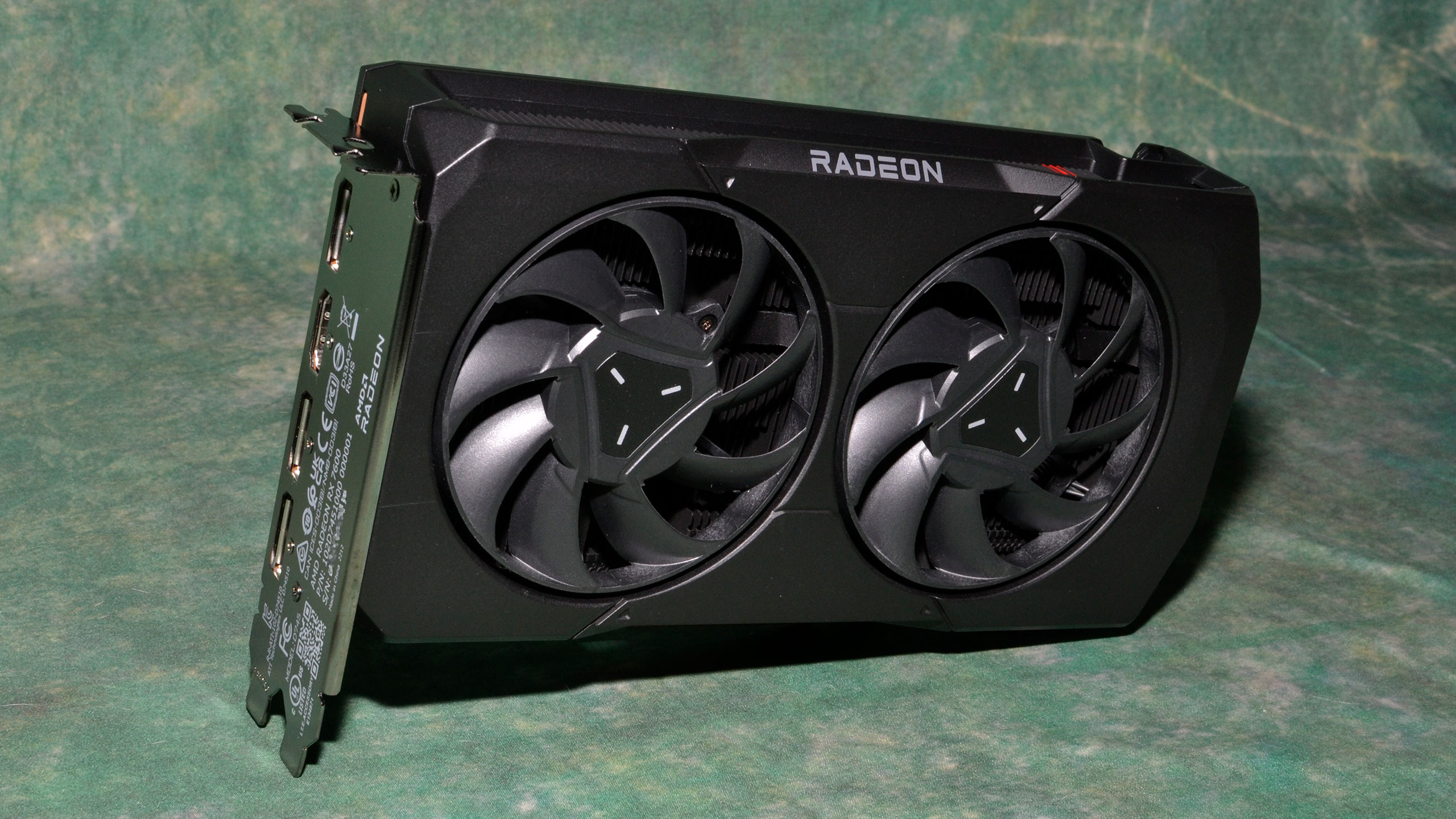
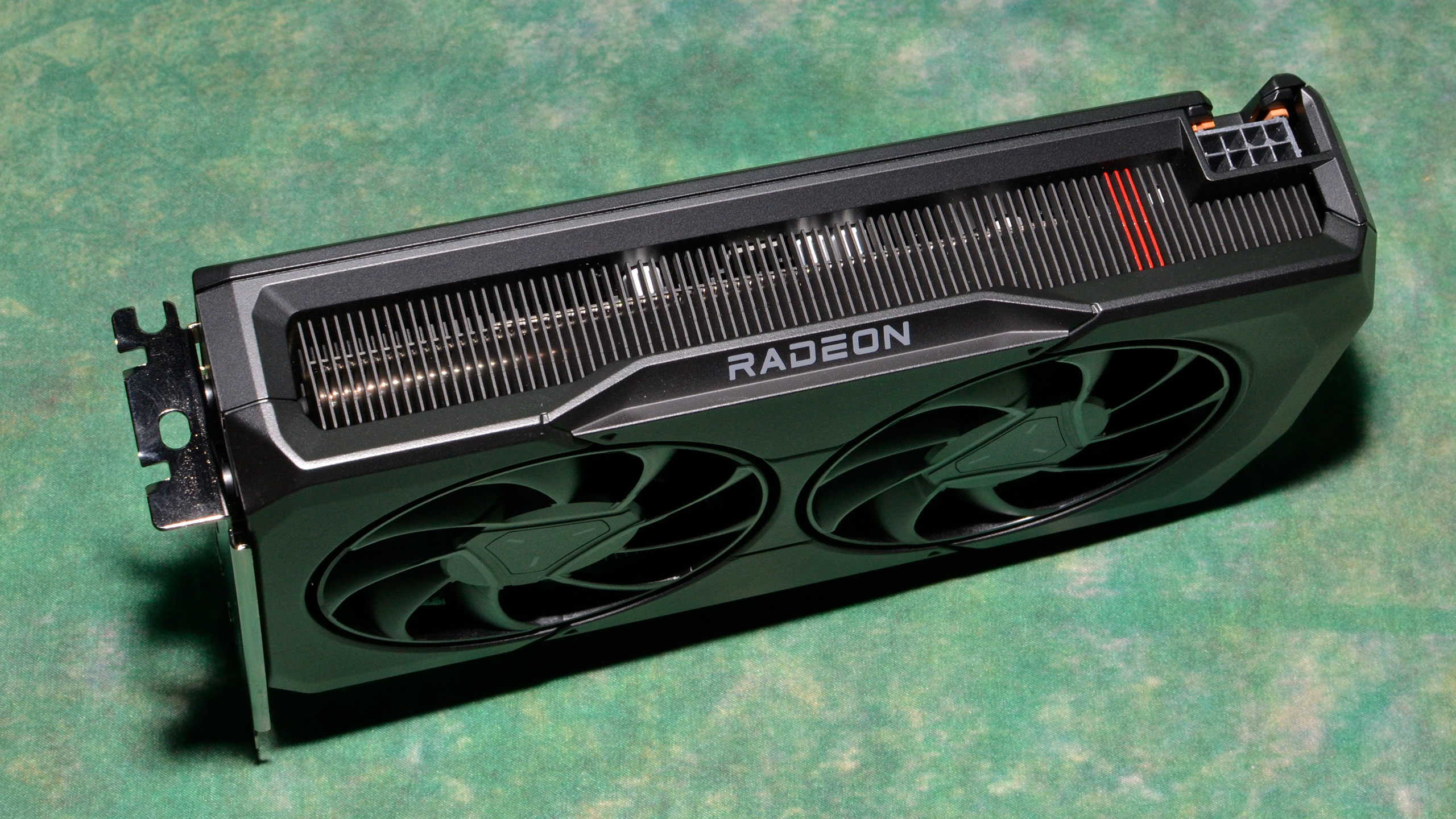
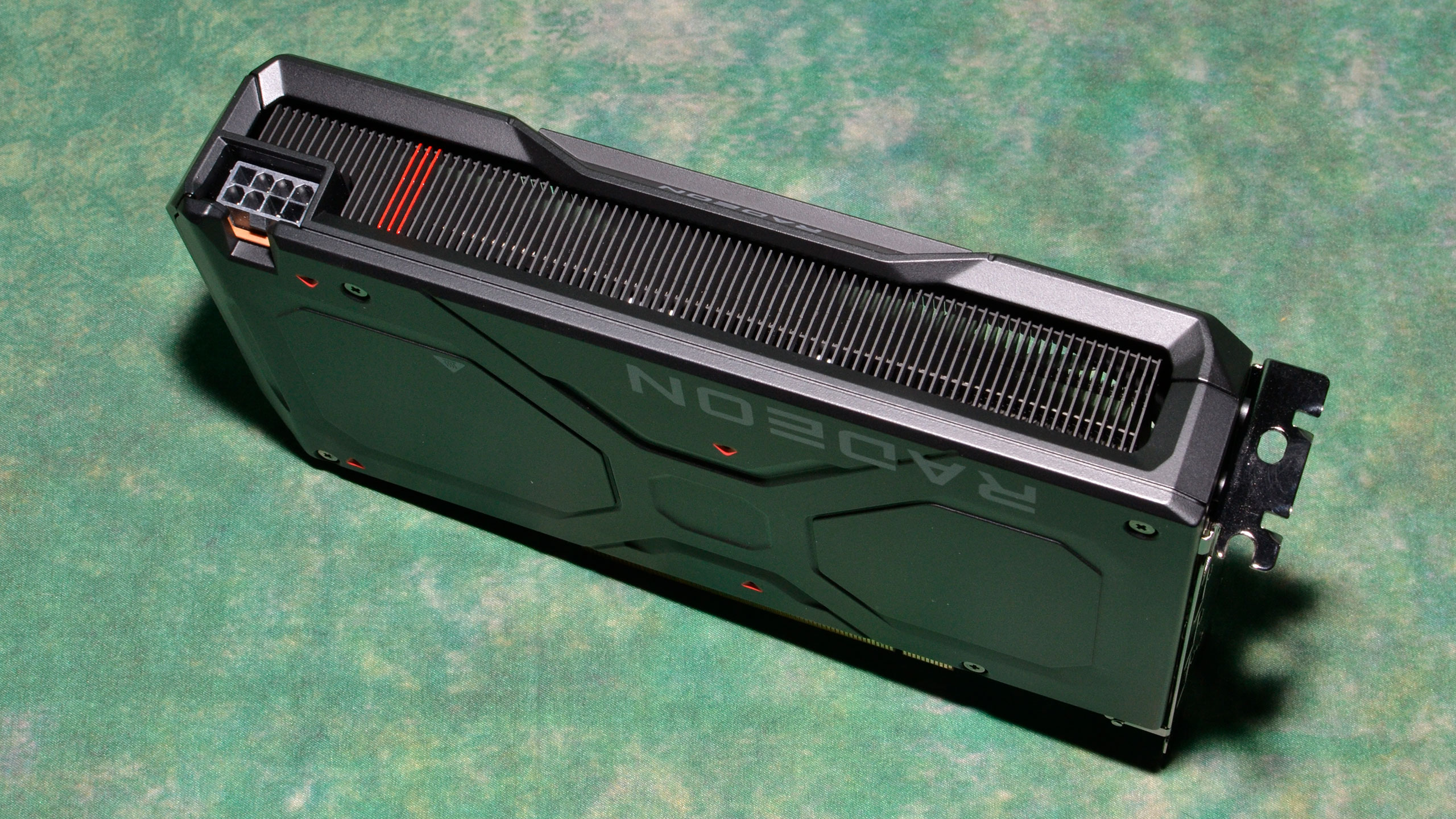
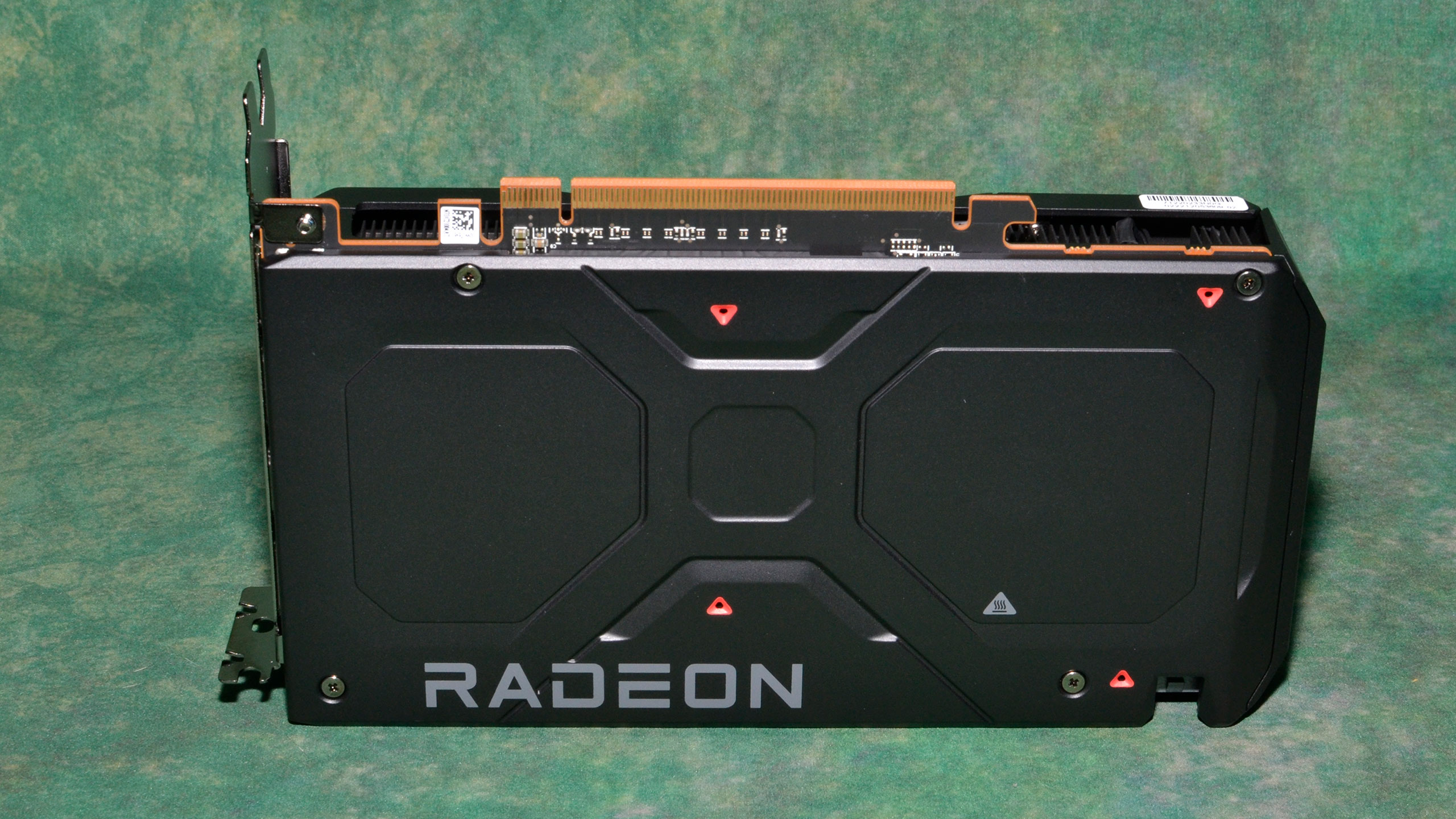
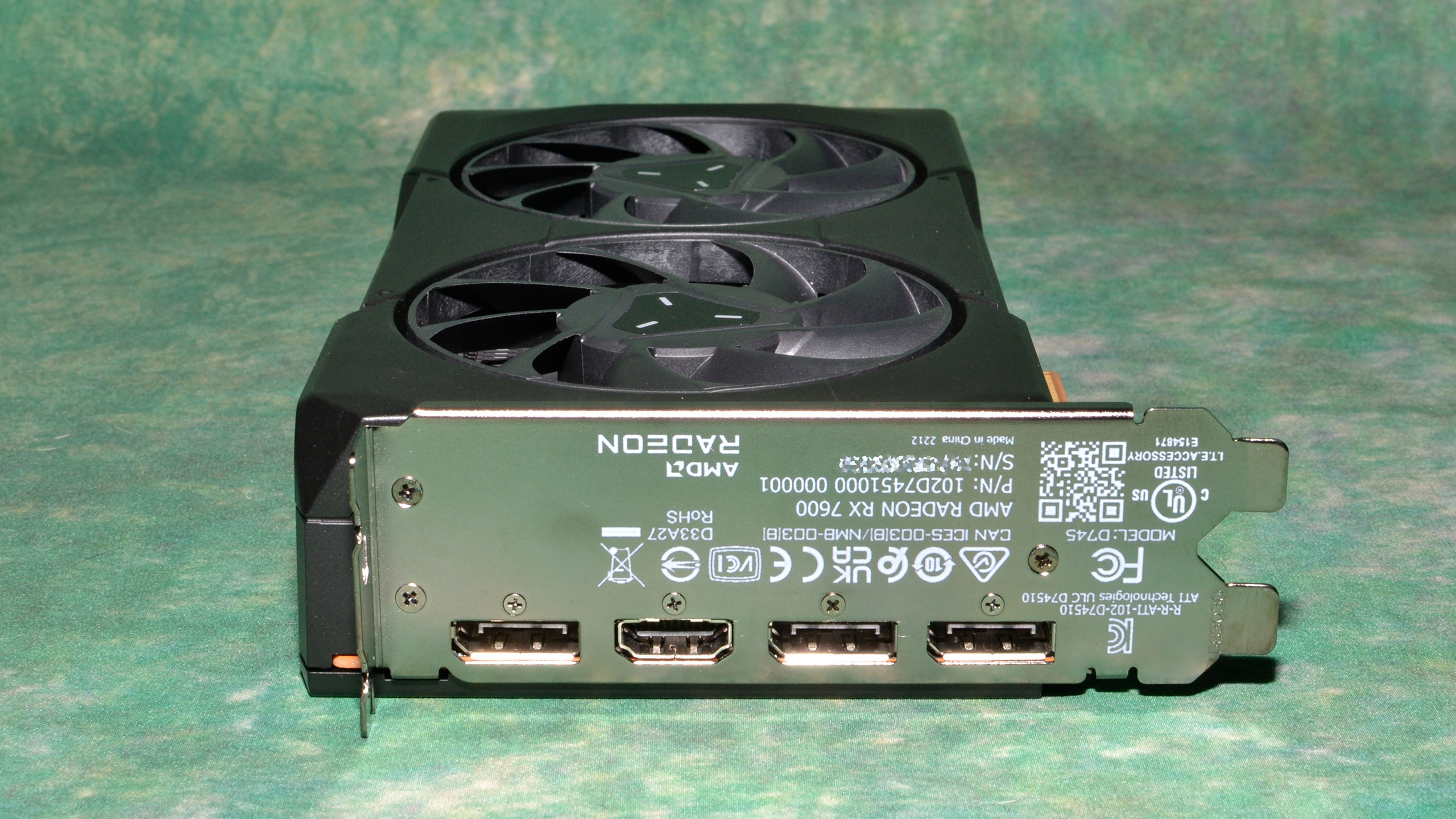
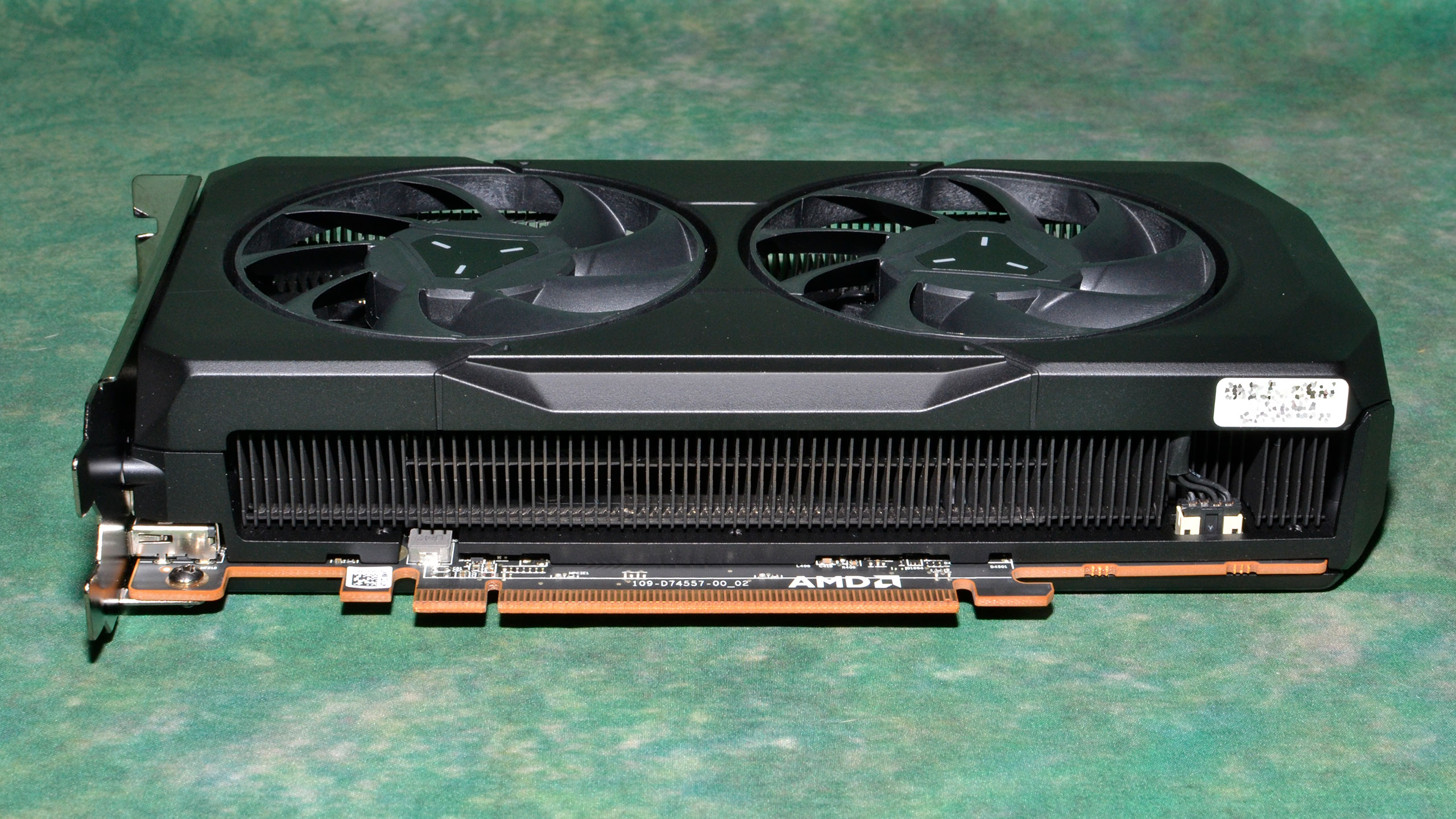
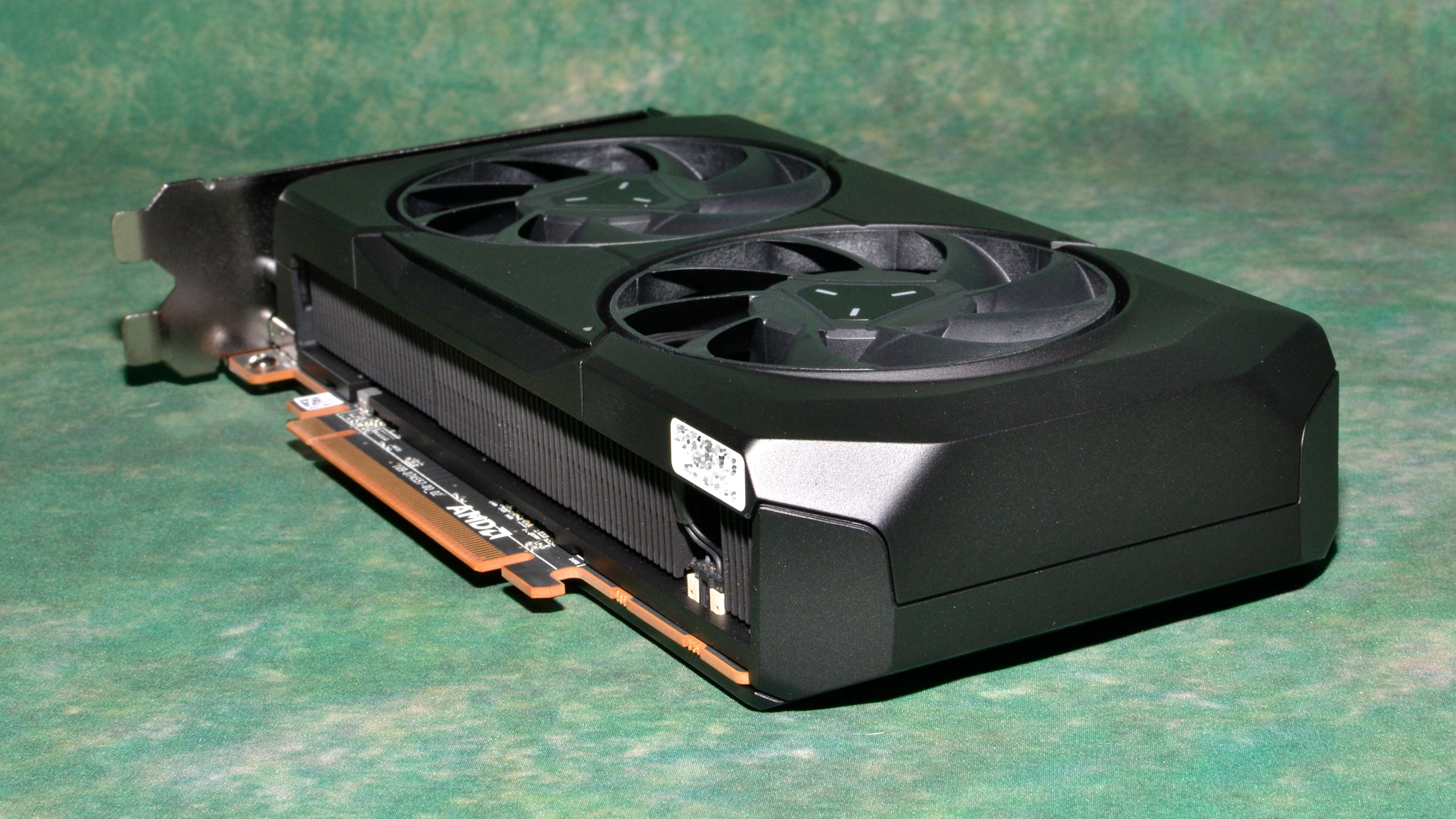
AMD's reference RX 7600 measures 204x109x40 mm and weighs 752g. It's a pretty dense feeling card, in other words, but it seems like it should keep the GPU cool. By way of comparison, the PowerColor RX 6650 XT measures 220x132x45mm and weighs 740g, while the XFX RX 6600 is 243x114x39 mm and weighs 615g. As we'll see later, however, while the cooler looks sufficient, it's not quite as robust as some AIB cards.
As you'd expect from AMD, there's a single 8-pin power connector — no 16-pin silliness here. It's a bit interesting that AMD has a 165W TBP (total board power) rating for the vanilla RX 7600, considering the previous generation RX 6600 had a 132W TBP. Still, either way, a single 8-pin connector should be more than sufficient.
AMD's card has the usual three DisplayPort 2.1 UHBR13.5 (54 Gbps) ports plus a single HDMI 2.1 port (48 Gbps). This is one area where AMD's latest generation hardware exceeds Nvidia's Ada design, which still uses DisplayPort 1.4a. Naturally, you'll need a DisplayPort 2.1 monitor or TV hooked up before the added functionality matters, and considering the cost, it likely won't matter to most RX 7600 buyers. Still, it's there should you ever need to power a 4K 240Hz monitor without using DSC (Display Stream Compression) — or you could potentially use a 4K 480Hz display with DSC.
Our test setup incidentally uses a Samsung Odyssey Neo G8 32-inch monitor, which supports 4K and 240Hz via DSC. It only supports DP1.4a, but it looks great and works fine on all the latest-generation GPUs, in my experience.
- MORE: Best Graphics Cards
- MORE: GPU Benchmarks and Hierarchy
- MORE: All Graphics Content
Get Tom's Hardware's best news and in-depth reviews, straight to your inbox.
Current page: AMD Radeon RX 7600 Reference Design
Prev Page AMD Radeon RX 7600 Review Next Page AMD RX 6700 Test Setup
Jarred Walton is a senior editor at Tom's Hardware focusing on everything GPU. He has been working as a tech journalist since 2004, writing for AnandTech, Maximum PC, and PC Gamer. From the first S3 Virge '3D decelerators' to today's GPUs, Jarred keeps up with all the latest graphics trends and is the one to ask about game performance.
-
Amdlova As what I expected another pile of crap. One watt better than the old gen. Why spend sand on these... 199 dollar max for this graphics.Reply
@JarredWaltonGPU thanks for the review... hard time to you trying find somenthing good or new on these graphics -
salgado18 AMD should have made a refresh of the RX 6650 XT and earn more money. If nothing really improved, then what's the point?Reply -
btmedic04 Glad to see the last minute price drop, it definitely makes it a much more appealing product. Currently at newegg there are 5 rx 6650xt models available with an average price of $288 minus an average discount of $20. So more or less the same price as the rx 7600 mba. given that information, if I were in the market at that price range, I'd just grab the 7600 given they are more or less the same price once you factor in discounts. It still would've been nice to see a -600 class part match the last generation -700 class part in performance. Maybe we'll see that with a 7600 xtReply -
InvalidError Reply
While it may not make sense for people who already own something from the last generation or two, plenty of people have 5+ years old GPUs or are building new with no half-decent GPU to spare.Amdlova said:As what I expected another pile of crap. One watt better than the old gen. Why spend sand on these... 199 dollar max for this graphics.
I'm still using a GTX1050, waiting for something decent to hit ~$260 CAN. I bought an open-box A750 for $270 a few weeks ago, ended up returning it as seemingly defective since it caused my PC to crash repeatedly. -
Elusive Ruse Reply
People want a brilliant GPU and they wanna pay $250 for it, as if the whole pandemic, parts shortage and a historic inflation went over their head. This might sound like a radical idea, but mid-range starts at $500 now. :LOL:InvalidError said:While it may not make sense for people who already own something from the last generation or two, plenty of people have 5+ years old GPUs or are building new with no half-decent GPU to spare.
I'm still using a GTX1050, waiting for something decent to hit ~$260 CAN. I bought an open-box A750 for $270 a few weeks ago, ended up returning it as seemingly defective since it caused my PC to crash repeatedly. -
atomicWAR Reply
Should it though?Elusive Ruse said:This might sound like a radical idea, but mid-range starts at $500 now. :LOL: